Discover heaven for chocolate lovers on a St Lucia chocolate tour and chocolate-making class at Hotel Chocolat’s Rabot Estate in the Caribbean, taking you on a journey from tree to bean to bar.
* This site contains affiliate links, where I get a small commission from purchases at no extra cost to you.
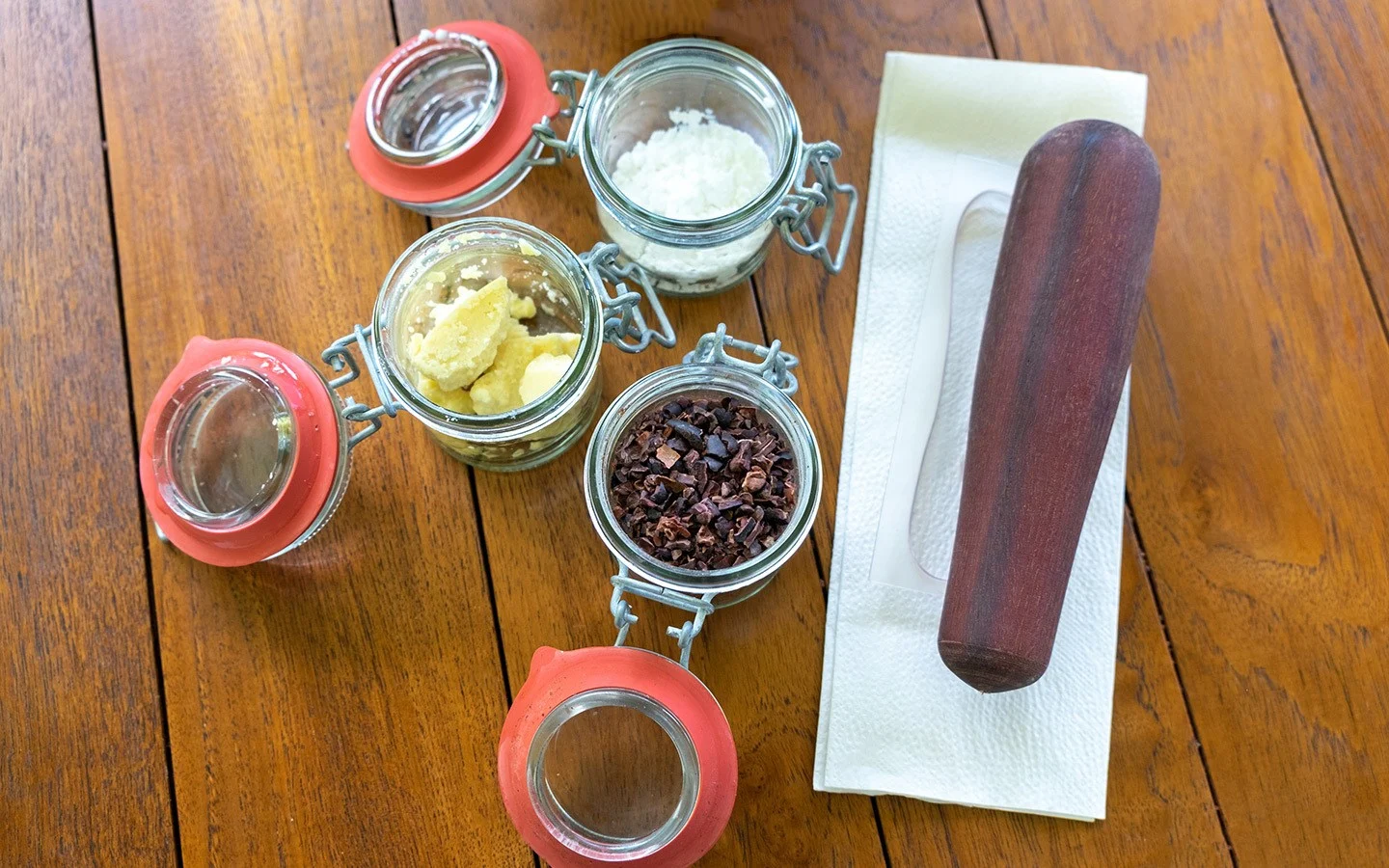
From an offering to the Mayan gods to a $50 billion business, chocolate has taken over the world. This little piece of heaven in a bar has millions of devotees around the world, whether you’re more a 90% cocoa or Cadbury’s Buttons type of chocolate-lover.
Even the scientific name of the cocoa plant means ‘food of the gods’ in Greek. But why do we love chocolate so much? Is it the ratio of fat to sugar, or the feel-good chemicals? Either way there’s something about this bean that makes it irresistible. I set out to uncover its secrets on a St Lucia chocolate tour with Hotel Chocolat – from tree to bar.
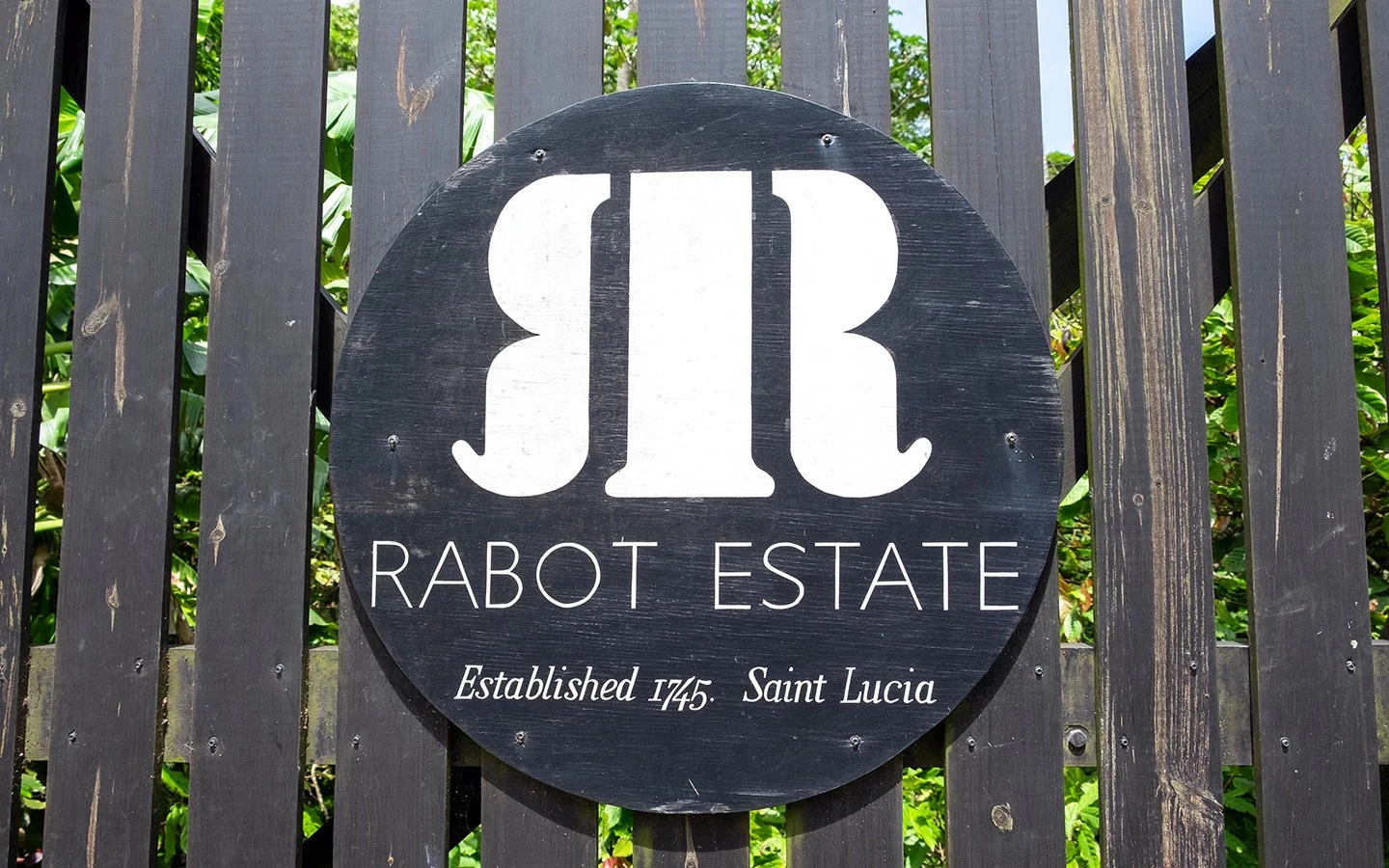
Chocolate in St Lucia
South America might be the ancestral home of chocolate, but the Caribbean also has a long history of chocolate-making. Cacao trees only grow in a limited region, around 20° north and south of the Equator. And St Lucia has the perfect growing conditions, with a rich volcanic soil and a tropical climate with plenty of sunshine and rainfall.
From the 1700s, St Lucia’s cacao beans have been exported to Europe and later the US where they’re made into chocolate. But bananas were the island’s main export until the 1990s, when changes to trade agreements led to a collapse in the banana trade.
Since then local farmers have turned back to cacao farming. And rather than exporting all their produce, more is staying in St Lucia where there are a growing number of local chocolate producers. You can eat, drink or even have spa treatments with it, and there’s a Chocolate Heritage Month in August to celebrate the island’s chocolate history.

Hotel Chocolat’s Rabot Estate
One of the best places to get a taste of St Lucia’s chocolate renaissance is the Caribbean base of British chocolate brand Hotel Chocolat. The company called themselves Hotel Chocolat because they thought the taste of a good chocolate could transport you to a new place. But they’ve since expanded and started an actual hotel in St Lucia too.
The Rabot Hotel* is set in the hills above Soufrière in southwest St Lucia, with panoramic views of the Pitons, the island’s most famous landmark. There’s chocolate for sale, chocolate on the menu, and the building is even a chocolatey shade of dark wood. But it’s not some kind of chocolate theme park – it’s a working cocoa plantation too.
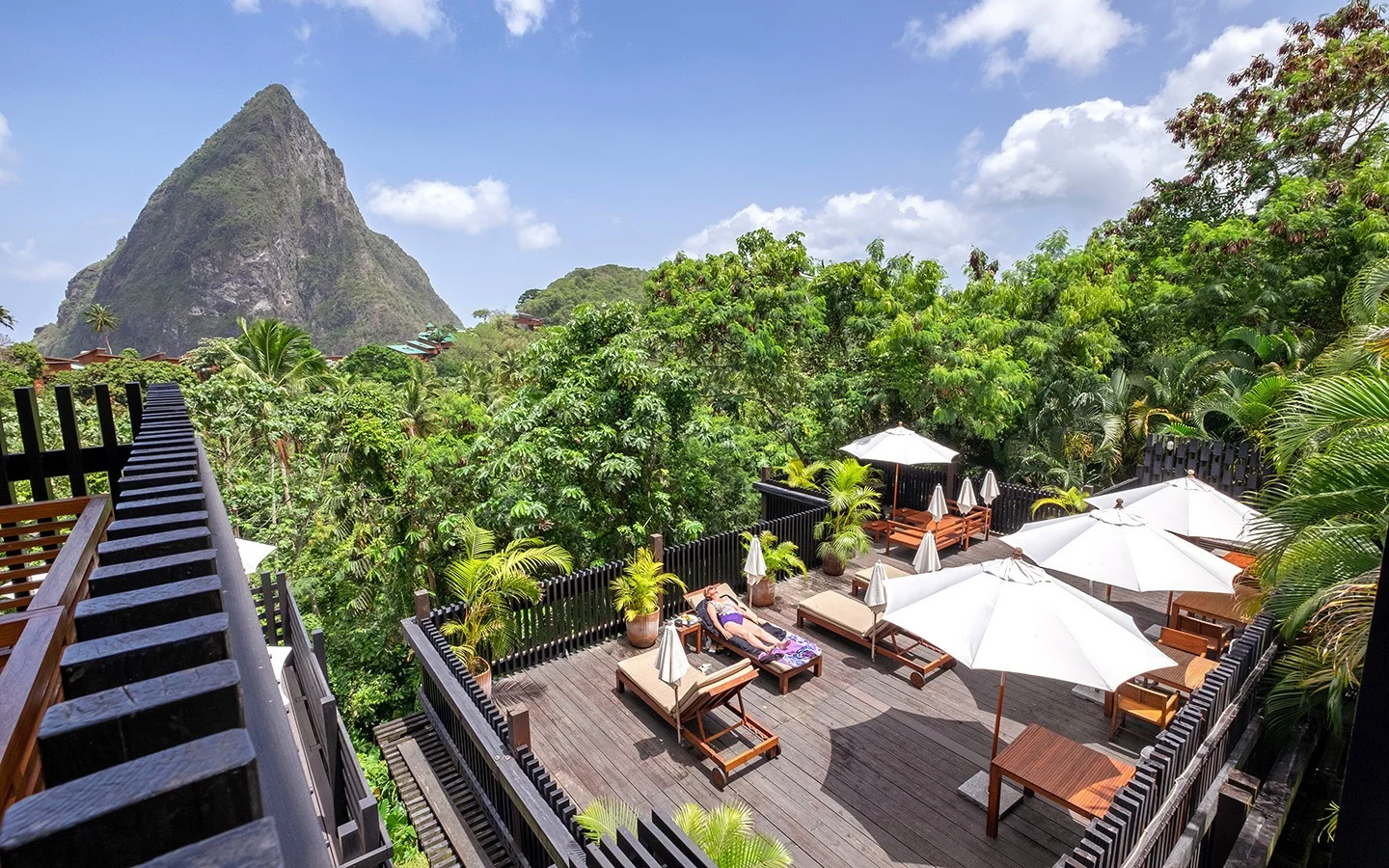
The 140-acre Rabot Estate cocoa plantation was founded in 1745 and taken over by Hotel Chocolat in 2006. At that time most chocolatiers bought their chocolate in ready-made and hardly any grew their own beans. So it was a pretty unusual step for them to buy an estate and get involved with all stages of the production process.
But growing their own cocoa has meant they can produce high-end, single-estate chocolate – a bit like single vineyard wines in that you can tell exactly where each bar comes from. The farm is also certified organic and has a focus on sustainable production.

A St Lucia chocolate tour with Hotel Chocolat
Hotel Chocolat have been running chocolate tours in St Lucia for several years. But they’re recently upgraded to what they call Project Chocolat – a mix of an education centre, shop, bar and restaurant where you can learn about, eat, drink and buy their chocolate.
You don’t need to be staying at the hotel to visit Project Chocolat and take a tour, which takes you through the life of a chocolate bar – from tree to bean then bean to bar. You can do the two parts of the tour together, or just the second part on its own.
Whichever you choose, it’s an interesting way to find out more about how chocolate is grown and made, have a go yourself, and of course taste some along the way.
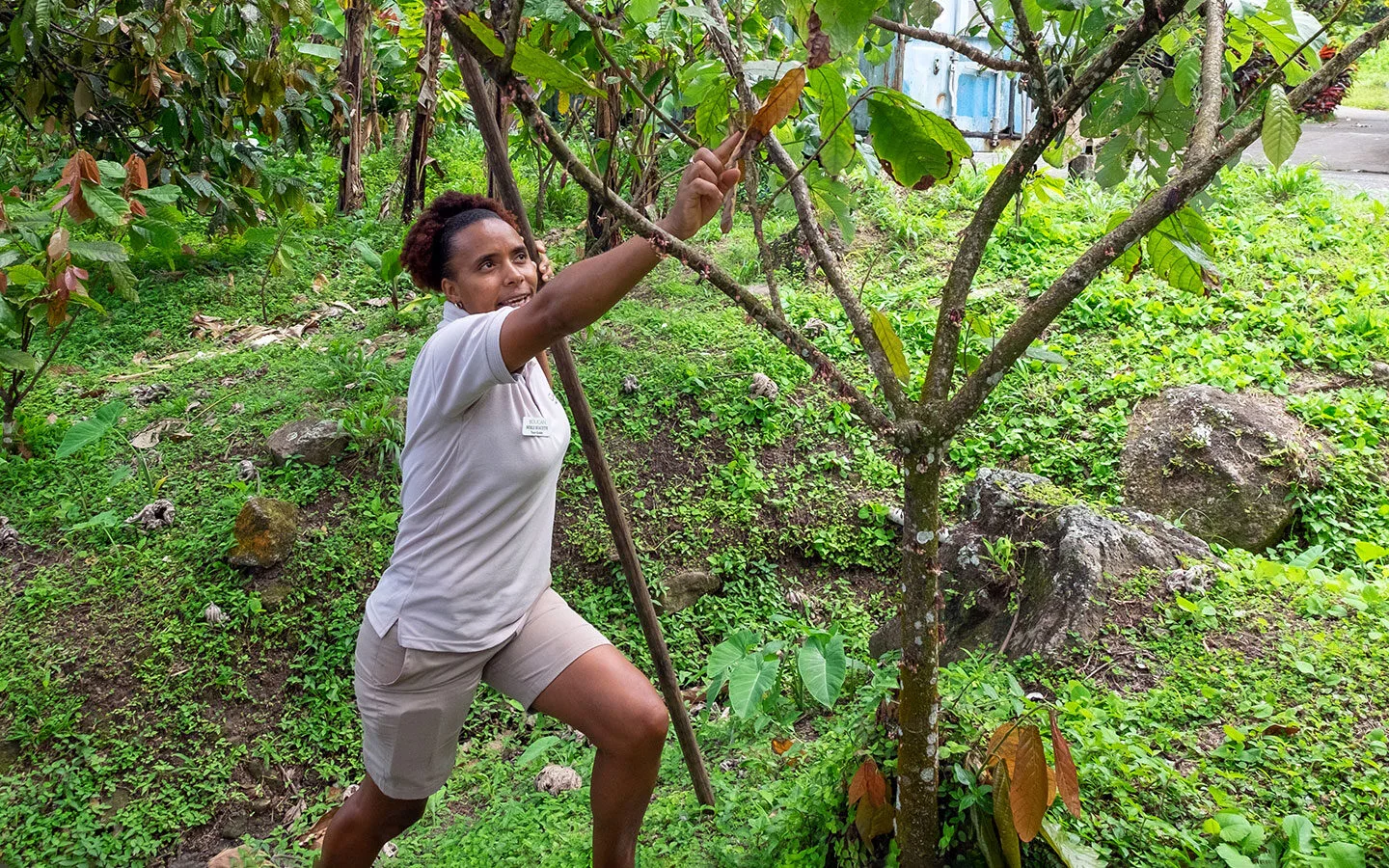
Tree to bean
The first part of our tour took us from the cacao tree to the dried beans. We started with a walk through the estate, where you can see cocoa pods in all their different stages of life – from tiny green shoots to swollen, ripe red pods almost ready to pick.
Cacao trees need plenty of shade, so they’re planted among taller local plants like the soursop, banana and mango – all of which feature on the menu in the hotel’s restaurant. Having a mix of plants also helps improve biodiversity. Trees take around three years to start to produce cocoa pods, and they can carry on bearing fruit for over 50 years.
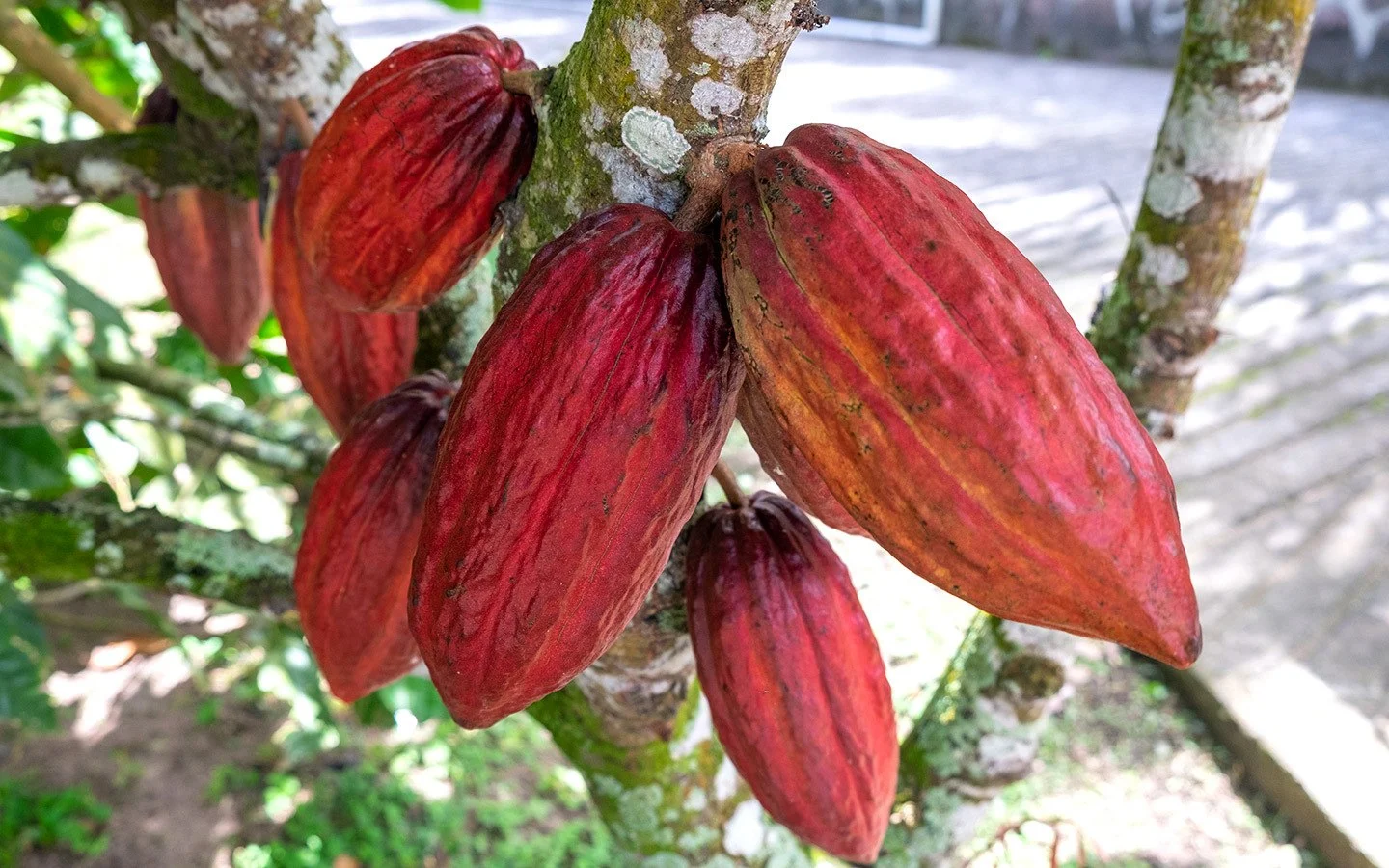
Cocoa isn’t an easy plant to grow, so instead of growing new plants from seed, seedlings are grafted onto existing roots. Cuttings are taken from the estate’s best plants and are spliced onto the hardiest roots. This means you get the tastiest chocolate on the plants which are most likely to thrive, and grafting also means the trees bear fruit quicker.
At Rabot Estate’s seedling nursery we got the chance to graft our own cocoa tree – a surprisingly low-tech process involving a knife and plastic tape. All the estate’s trees are recorded, so if I come back to St Lucia I can check up on how my tree is doing.
Not all of Hotel Chocolat’s cocoa is grown at Rabot Estate, they also work with local farmers who buy their grafted plants and then sell the beans back at a higher cost. That way they can produce more chocolate but still keep control of quality.

The main harvest season is between November and February. Once the pods are harvested, they’re cut open and the cocoa beans are scooped out. Our guide cracked open a pod so we could see the brown beans inside, covered in a thick, sticky white coating.
The beans are pretty bitter but the coating is sweet and sticky if you suck it. They’re nicknamed jungle M&Ms, though they taste nothing like chocolate at this stage.
To get the beans ready for roasting, they’re fermented in big wooden containers for a week to develop flavour before being left to dry out underneath St Lucia’s hot sunshine. Finally the beans are roasted at 150°C and the nibs are separated from the shells.

Bean to bar
The next phase of the tour took us through how to turn the beans into chocolate using classic traditional techniques. Everyone was given their own workstation, with jars of ingredients and a heated pestle and mortar. There were dried cocoa nibs, cocoa butter and icing sugar – everything you need to create the perfect chocolate bar.
Well that and a whole lot of hard work. First we crushed the cocoa nibs by pounding them in the pestle and mortar. In St Lucia’s 30-degree heat it didn’t take a long to build up a sweat. And it’s tougher than it looks – even after 15 minutes my cocoa was more gritty than silky smooth. Next you add cocoa butter and sugar and keep on stirring.
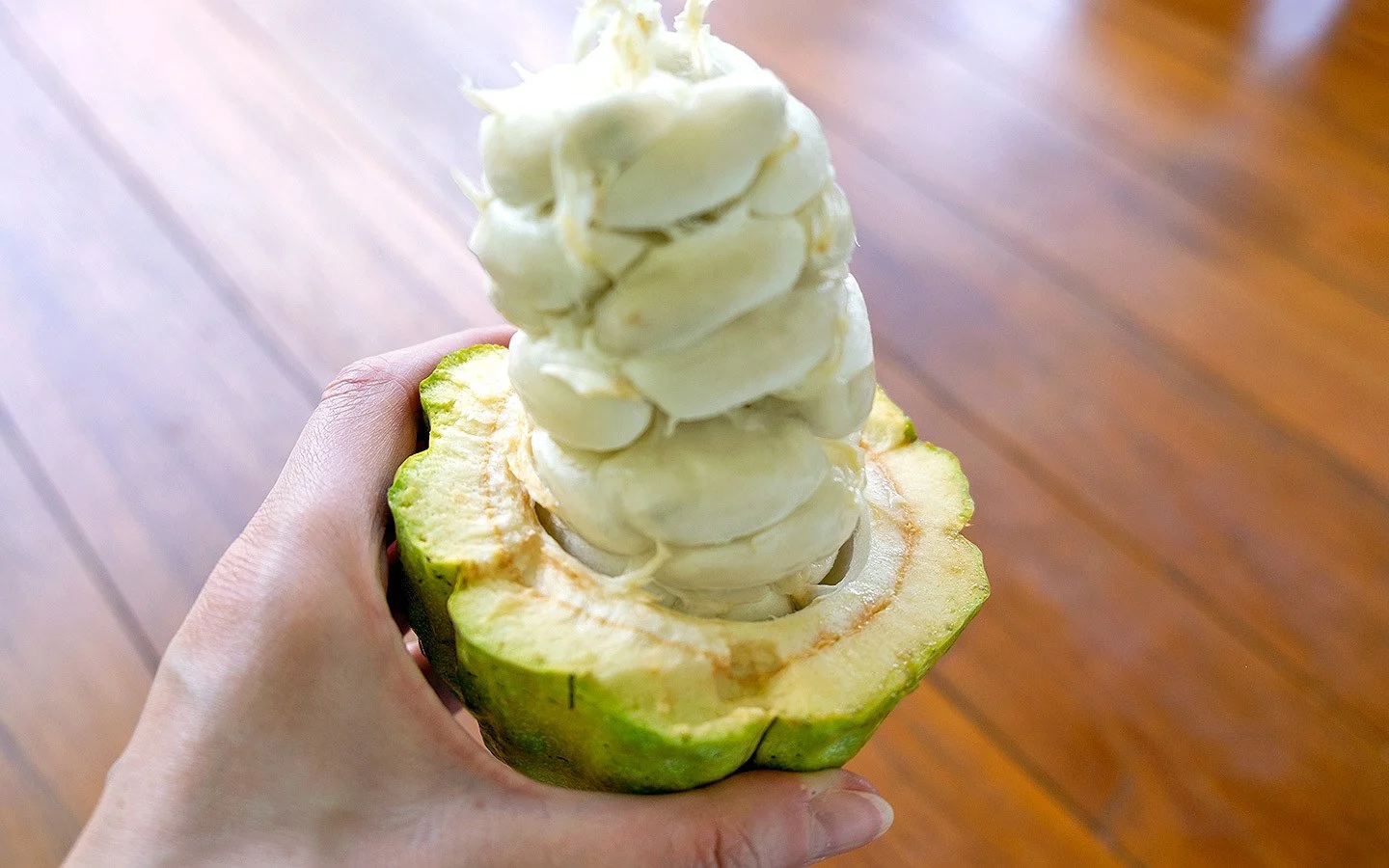
Our guide Merle kept us supplied with tales from the history of chocolate to distract us from our aching arms. Like the Aztecs who used cacao seeds as currency and mixed chocolate and spices into a bitter drink. And the Bristol chocolate-maker Joseph Fry who discovered adding cocoa butter made chocolate mouldable.
Finally we poured our melted chocolate into a mould and left the chocolate to set. After a quick tasting of course. The pure, deep flavour takes a bit of getting used to if you’re used to sugary mass-produced chocolate. And my only criticism of the tour is that it would’ve been nice to have more tasting samples to try to see how it’s supposed to taste.
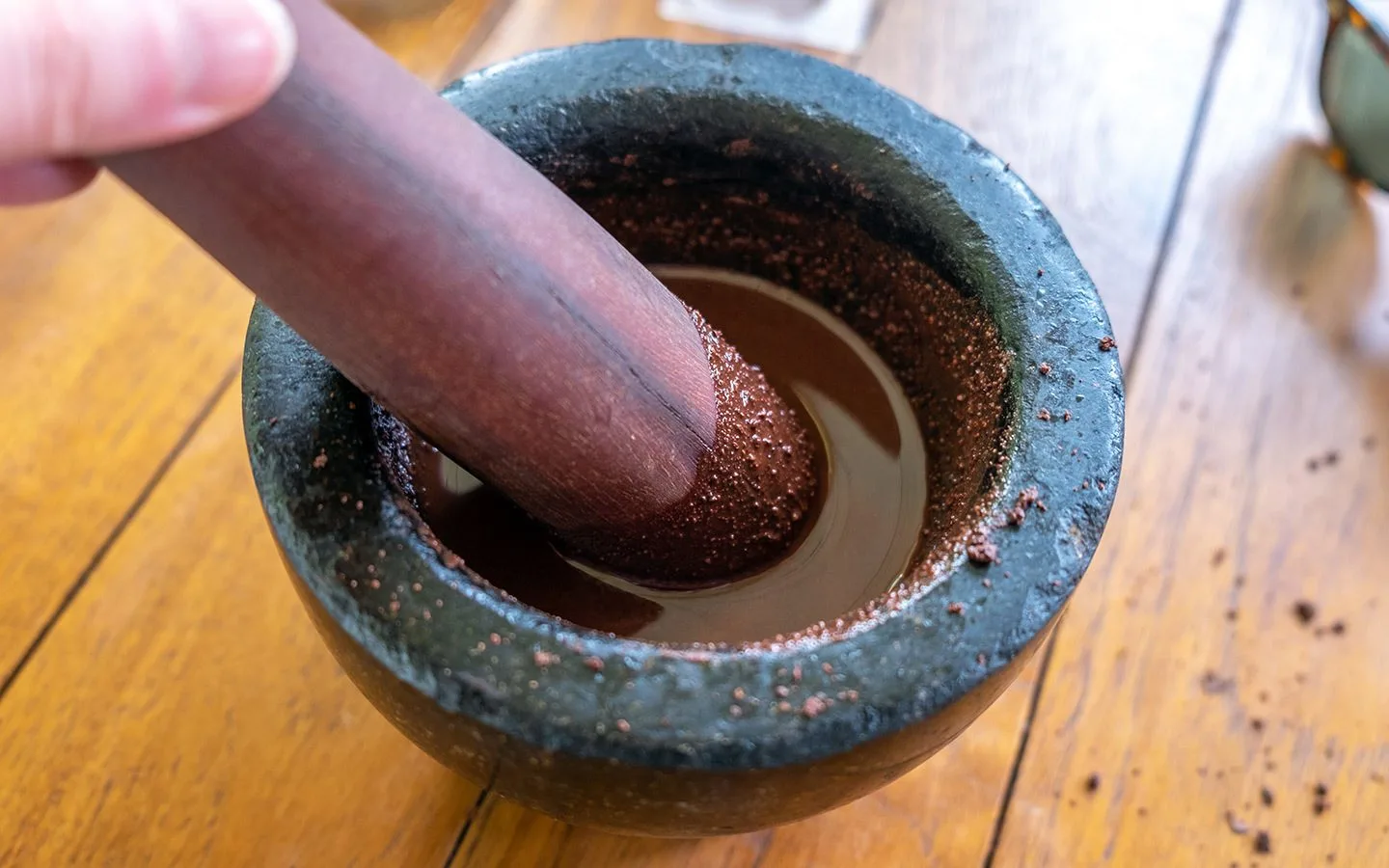
Bar to mouth
The final stage is the eating – but first you need to wait for your chocolate to set. If you’ve booked the full Tree to Bar St Lucia chocolate tour, lunch at the Cacao Cuisine street food restaurant is included, with cacao burgers, ribs and ice creams on the menu.
Or you can upgrade to lunch at the Rabot restaurant. Their cacao-infused menu uses chocolate in every form – from pulp to roasted nibs and their single-estate chocolate. And if the chocolate cocktails don’t knock you out, the view of the Pitons will.
The idea of a chocolate-based main course takes a bit of getting your head around. But cocoa has been used as a savoury ingredient for over 3000 years, versus only 500 years as a sweet ingredient. My Cacao Super Bowl (a salad made with quinoa and topped with cacao-infused yoghurt) tasted much more spicy and nutty than sweet.
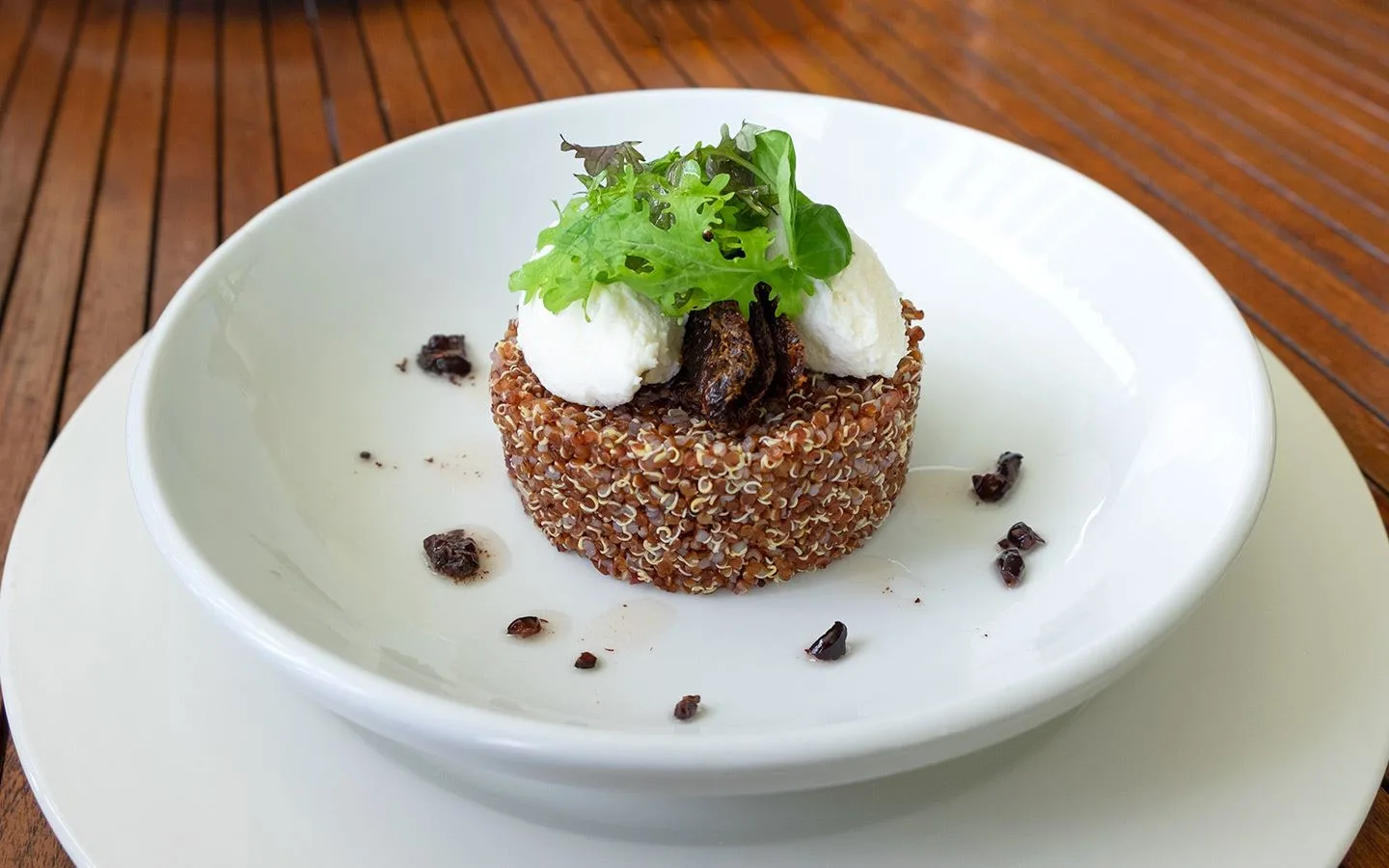
Other chocolate concoctions on the menu include cacao cannelloni, fish and chips cooked in cacao beer tempura and their take on West Indian rum-infused chicken.
But the real star was the dessert menu. I’ve never seen so many chocolate options – chocolate lava cake, chocolate mousse, a nine-course chocolate tasting plate. But I couldn’t resist a Magnificent Piton – a meringue recreation of the Pitons served in a chocolate soup with bananas, almonds and caramel sauce which was rich, creamy and smooth.
Which is more than you can say for my lovingly hand-crafted chocolate bar. Despite all the effort it still came out a bit bitter and grainy. I’m clearly better off leaving the chocolate-making to the experts and concentrate on what I’m best at – eating it.
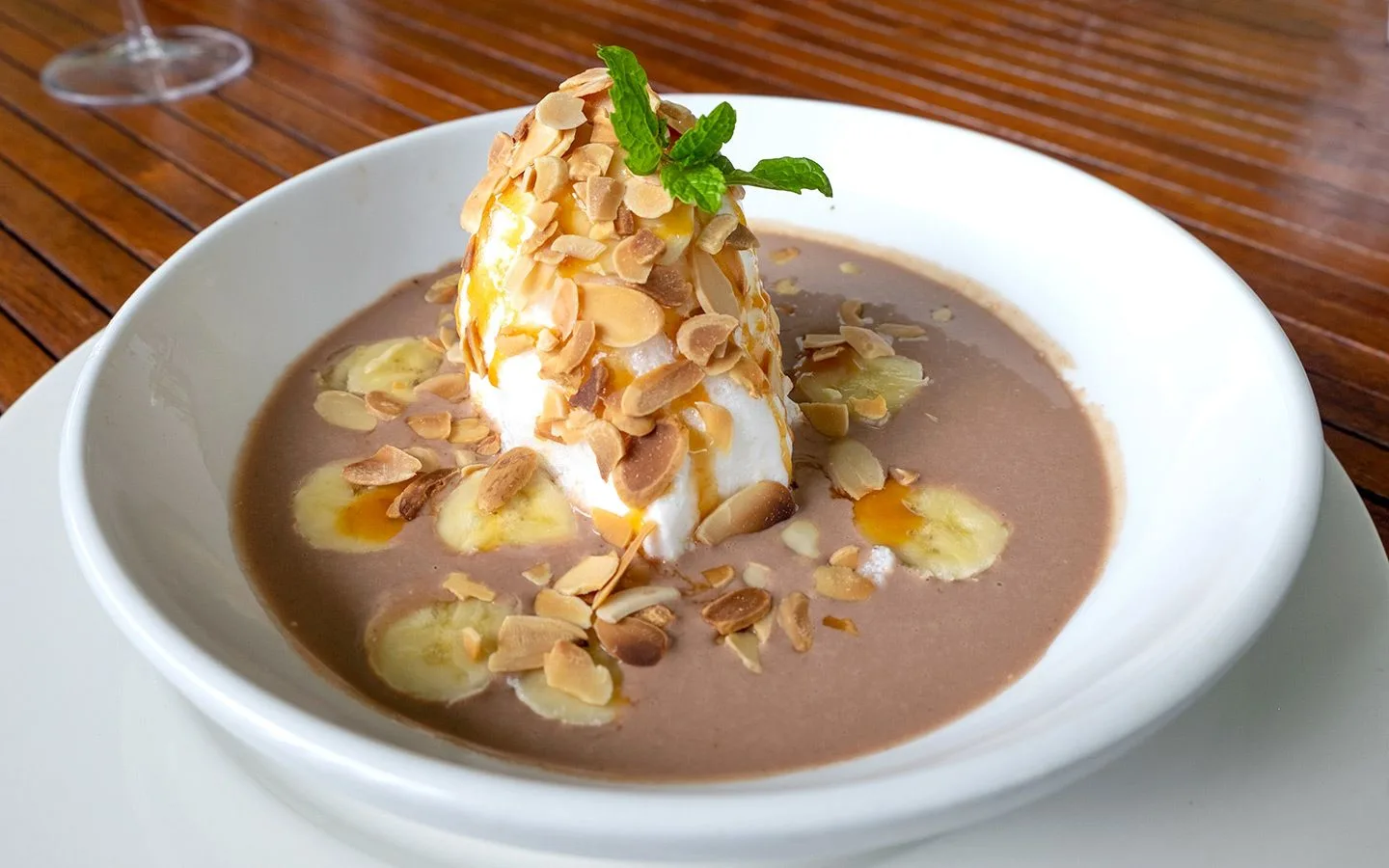
The details
St Lucia chocolate tours at Hotel Chocolat’s Rabot Estate take place daily. The full Tree to Bar Experience* – combining the Tree to Bean and Bean to Bar sections – lasts around three hours. It costs $119 per person including a street-food-style lunch.
You can also do the Bean to Bar Experience* on its own, which doesn’t include the plantation tour. It costs $69 per person and lasts an hour.
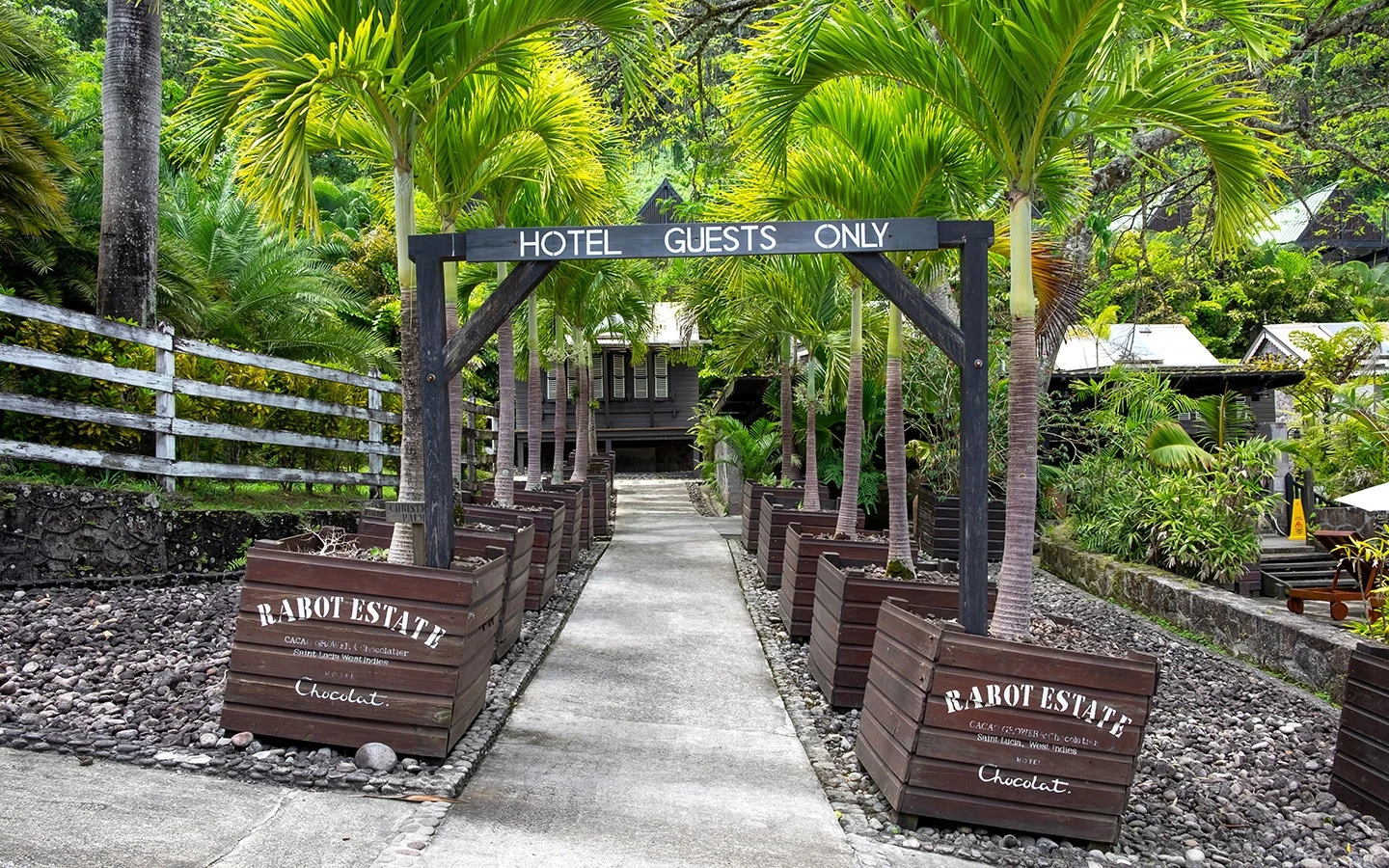
Save for later

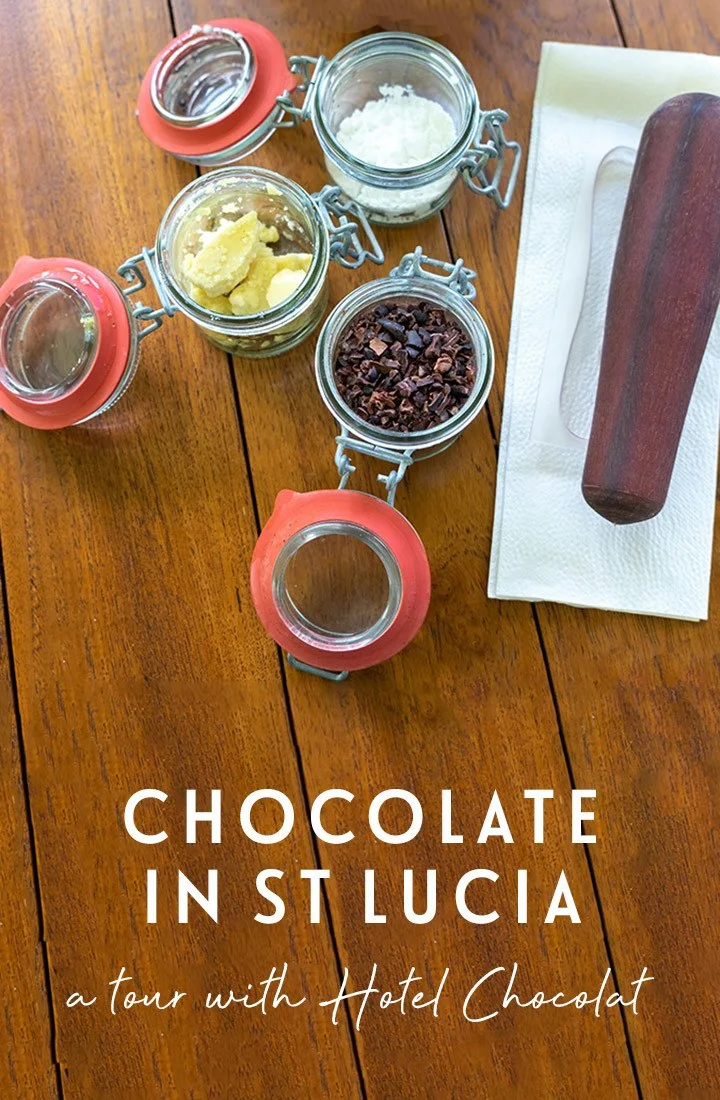




Nanyi Mateo
Saturday 8th of February 2020
I have never know about this ''hotel concept'' before. I'm a chocolate lover so I feel like I MUST go there some day. Thank you so much for letting us know about your adventures!
Lucy
Wednesday 12th of February 2020
If you love chocolate you really will love this place!